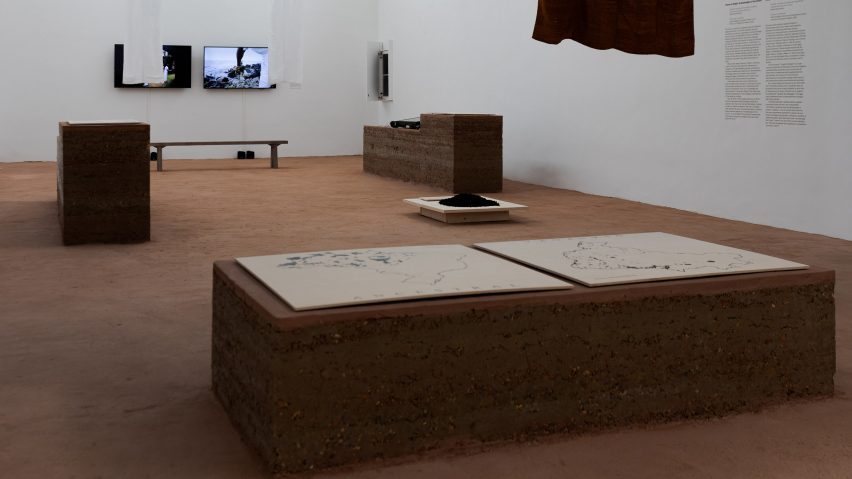
Brazil "fills entire pavilion with earth" at Venice Architecture Biennale
The Brazilian pavilion, which is unveiled exclusively on Dezeen, has been filled with earth for this year's Venice Architecture Biennale.
With its contribution to this year's architecture biennale, the curators of Brazil's pavilion – Gabriela de Matos and Paulo Taveres – choose to focus on earth and named its exhibition Terra.
They hope to communicate how Brazil's land has shaped understandings of heritage and identity.
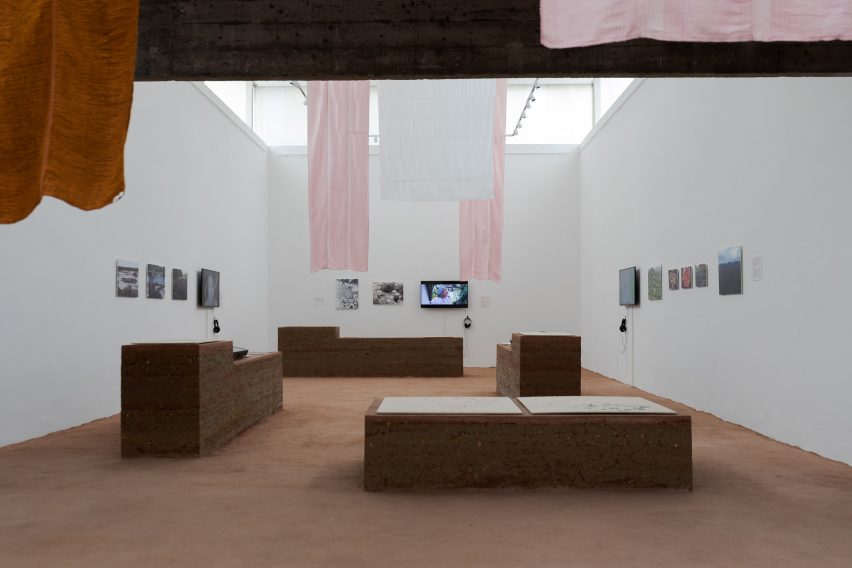
"The significance of land and earth is deeply rooted in the conception and narratives of the national formation and representation of Brazil," De Matos and Taveres told Dezeen. "It encompasses the idealised and racialised vision of 'tropical nature' that has shaped the portrayal of Brazil's national identity."
"At the same time, the concept of earth is of great importance in the cosmologies, philosophies, and narratives of the Indigenous and Afro-Brazilian populations, which form a significant part of Brazil's cultural matrix," the curators continued.
"In this context, earth represents an ancestral connection that goes beyond the borders of Brazil, leading us to explore cultural geographies and alternative perspectives on belonging, cultivation, rights and reparation."
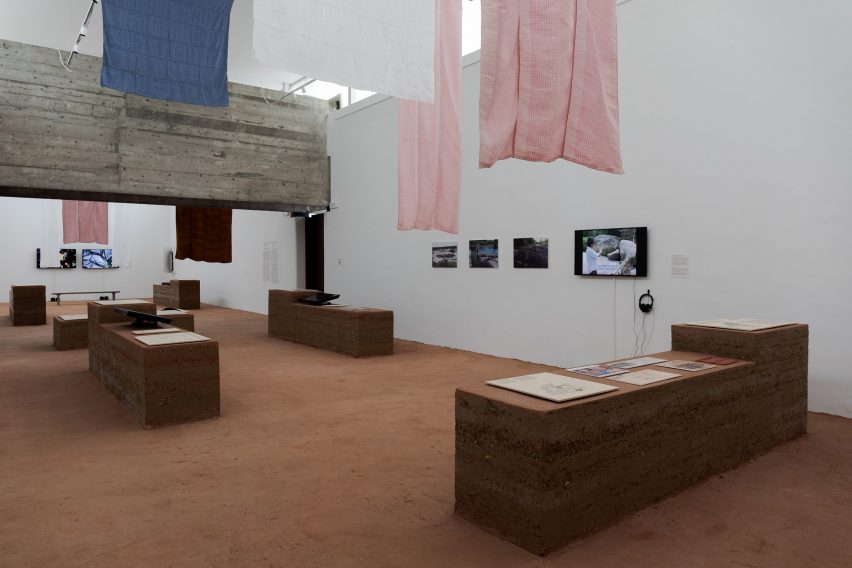
Throughout the pavilion the floors have been covered with earth, while a series of plinths were made from rammed earth to display the exhibits.
The earth was designed to contrast with the modernist pavilion and make a connection to the architectural traditions of Brazil's Indigenous peoples.
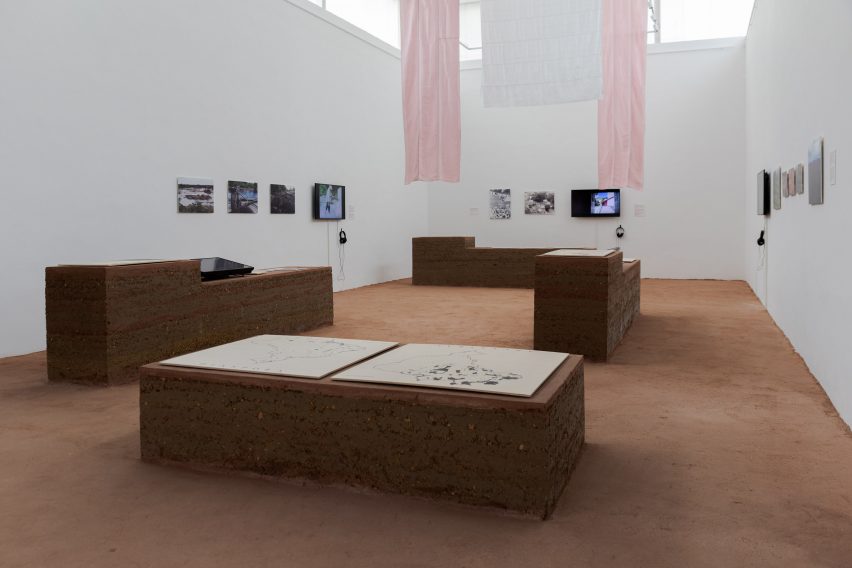
"The entire pavilion was filled with earth, providing visitors with a direct connection to the traditions found in Indigenous territories, Quilombola dwellings, and candomblé ceremonies," said De Matos and Taveres.
"By immersing the public in this environment, we hope to foster a deeper appreciation for the wisdom embedded in these cultural practices and instil a greater understanding of the intrinsic value of land and earth in shaping our collective future."
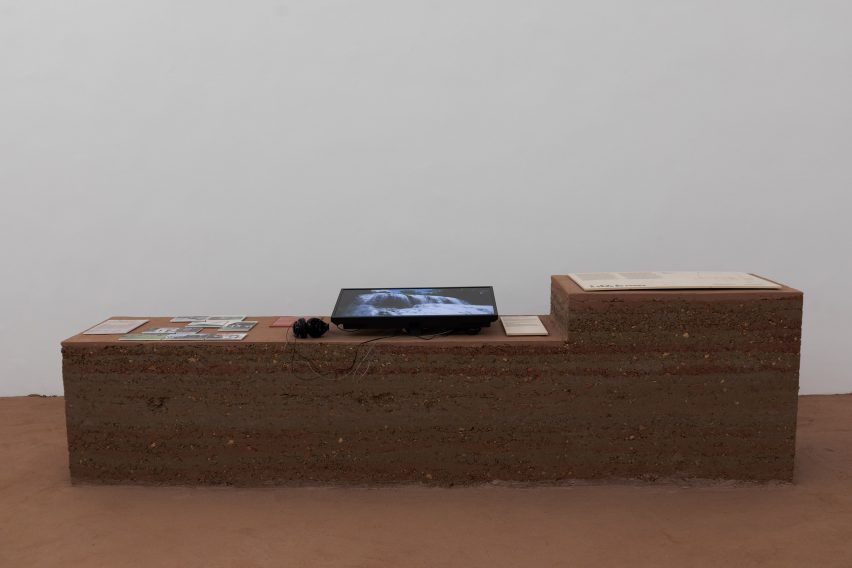
Within the pavilion, De Matos and Taveres presented a series of exhibits within its Places of Origin, Archaeologies of the Future gallery that aim to showcase the practices of the country's Indigenous communities of land management and production.
"The tribes in Indigenous and Quilombola lands offer valuable lessons that can be learned and applied in various ways," said the curators.
"They serve as a powerful example, pointing towards a future where 'de-colonisation' and 'decarbonisation' go hand in hand, particularly in the face of climate change," they continued.
"The practices, technologies, and customs employed by these communities in land management and production, along with their unique approaches to architecture, are deeply rooted in the earth."
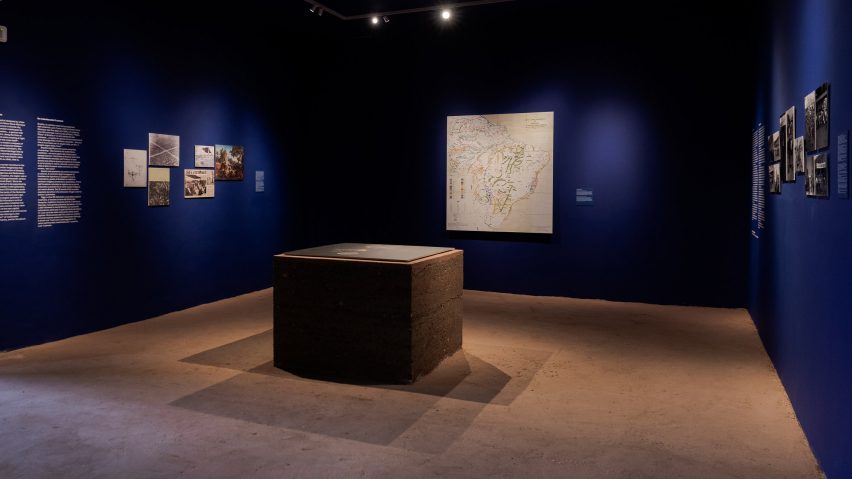
The second gallery is called De-colonizing the Canon. Within the space, the curators created a series of exhibits that aim to reassess the process by which the country's capital, Brasília, was created.
"We question the prevailing notion that Brasília was built in an isolated, uninhabited area, neglecting the fact that Indigenous and Quilombola communities were forcibly displaced during the colonial era and further marginalized with the advent of the modernist city," said the curators.
"Our objective is to present a more intricate and diverse portrayal of the territory, architecture, and heritage that shaped Brazil's national formation and modernity," they continued. "Through a deliberate focus on neglected narratives within the architectural canon, we seek to challenge and expand upon conventional perspectives."
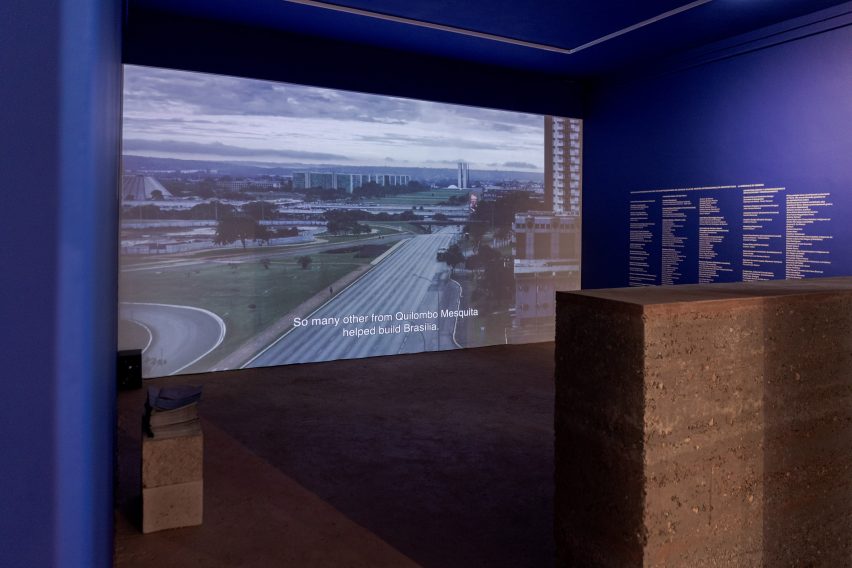
De Matos and Taveres hope that visitors to the pavilion will gain an understanding of both Brazil's past and future and the need to lean from "ancestral wisdom".
"By embracing the concept of earth as both a source of memory and a catalyst for envisioning potential futures, we aim to capture the essence of Brazil's past and present," they said.
"Within the exhibition, we emphasise the significance of embracing the knowledge and practices of Indigenous and Afro-Brazilian communities, whose lands have been scientifically proven to be the best-preserved territories in Brazil," they continued.
"These communities continue to maintain a profound connection with the earth, rooted in their practices, technologies, and customs. By learning from their ancestral wisdom, we can reframe the present and future, acknowledging the value of their heritage and incorporating it into our architectural discourse."
The Brazil pavilion is one of several that will be opened exclusively on Dezeen today. Other pavilions that were unveiled on Dezeen include the Danish pavilion, which focuses on rising Sea levels, and this year's Finnish pavilion that "declares the death of the flushing toilet".
The photography is by Rafa Jacinto. Courtesy Fundação Bienal de São Paulo.
Dezeen is live reporting from the Venice Architecture Biennale, which takes place from 20 May to 26 November 2023. See Dezeen Events Guide for all the latest information you need to know to attend the event, as well as a list of other architecture and design events taking place around the world.